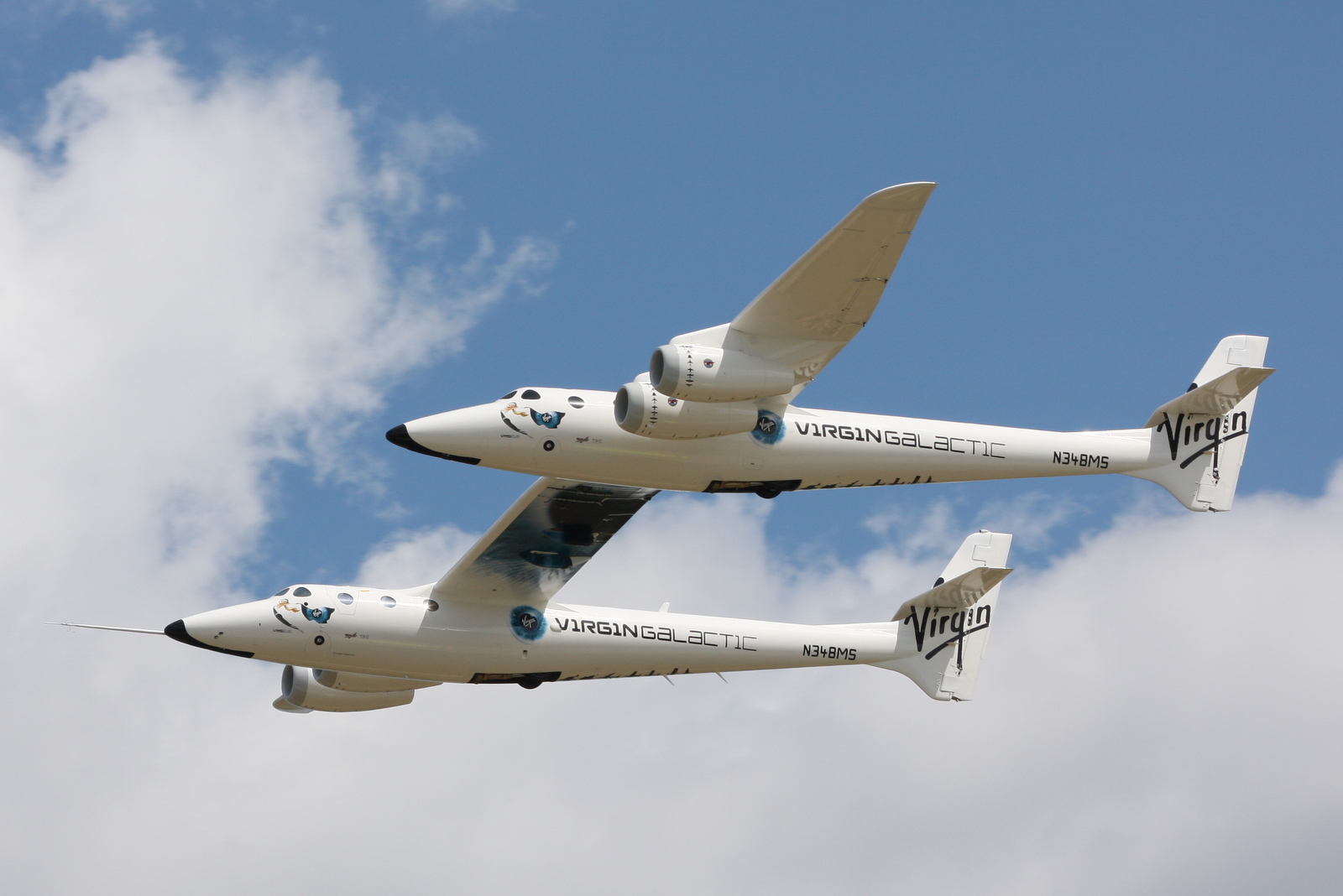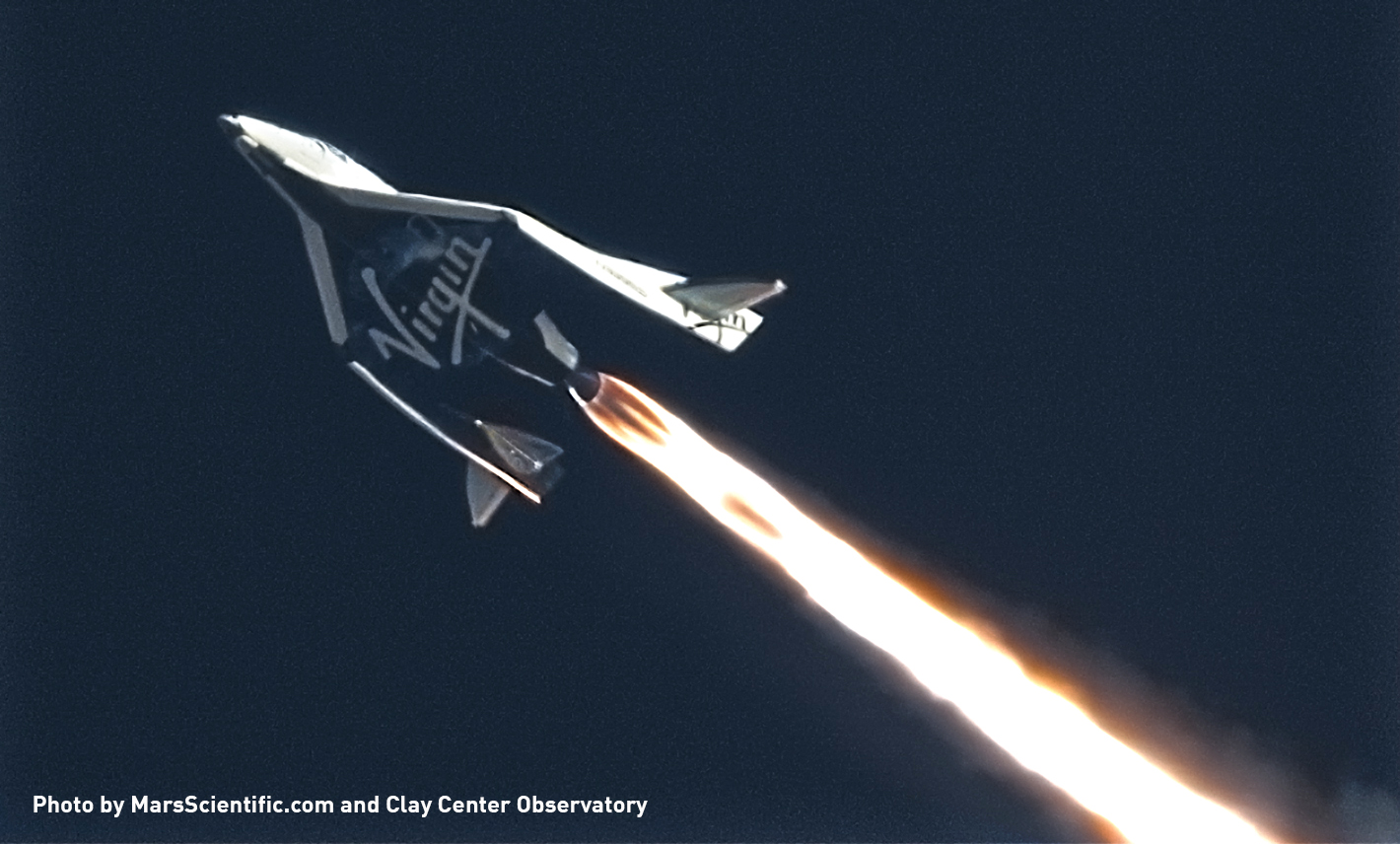It’s been a rough week in the space flight industry. On Friday afternoon, a test flight of Virgin Galactic’s SpaceShipTwo class VSS Enterprise resulted in a catastrophe, crashing down in the Mojave desert, killing one pilot, with the other ejecting and now being treated in hospital.

During the test flight, launched by Virgin Galactic’s partner corporation Scaled Composites from the Mojave Spaceport, WhiteKnightTwo, an aircraft designed to bring SpaceShipTwo to launch altitude, successfully released the spacecraft. After two minutes, something went wrong, resulting in the eventual crash of the craft.


Virgin Galactic released a statement shortly after the accident, saying the National Transportation Safety Board (NTSB) would be conducting an investigation starting Saturday that would last for several days, so we will have to wait and see what the results are before we can understand what went wrong.
SpaceShipTwo co-pilot Michael Alsbury did not survive the crash. Scaled Composites Director of flight operations Peter Siebold was piloting SpaceShipTwo, and was injured in the crash. He is currently in hospital and is expected to recover.
During the official press conference, it was revealed that the rocket motor used by the spacecraft had flown in four previous successful flights. However, this flight was the first where the craft used a new fuel, a nylon-type plastic called thermoplastic polyamide. This could have been what caused the issue, but we won’t know for a few days until the official report is released.
SpaceShipTwo does not have ejection seats, but it does have an escape hatch, and pilots are required to wear parachutes in any test flight. The cabin is pressurized for pilots and future customers. Because the flights would go above 50,000 feet, if the cabin was not pressurized, the pilots would be exposed to conditions that are essentially the same as outer space, meaning they could only survive for minutes. Space is dangerous, and these type of suborbital flights are extremely dangerous.
This has been the second crash of a commercial spaceflight vehicle this week, with an Orbital Sciences Antares rocket exploding just after liftoff on Tuesday.
The question on many people’s minds has been ‘Is commercial Spaceflight safe?’ I still believe it is. I made some comments on a CBC article this week about how the Antares rocket explosion will not set back the commercialization of Space.
The thing is, Spaceflight has always been dangerous. During the Cold War era, much of the rocket technology was developed on a trial and error basis, science in its purest form. Accidents happen all the time, and sadly sometimes there is a loss of life, as with the Shuttle disasters Challenger and Columbia.
This is also not the first accident to plague SpaceShipTwo. During a test of the systems of SpaceShipTwo, an explosion occurred, killing three employees and injuring three more.
We hope that the surviving pilot has a speedy recovery, and offer condolences to the family of Micheal Ashbury. We will have some more answers in the coming days, which will allow us to learn from the accidents and move forward, ensuring the safety of future flights.
